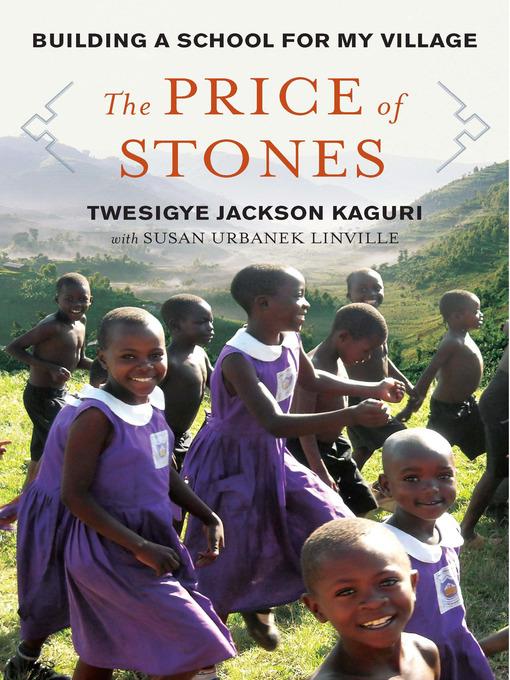
The Price of Stones
Building a School for My Village
فرمت کتاب
ebook
تاریخ انتشار
2010
نویسنده
Susan Urbanek Linvilleناشر
Penguin USA, Inc.شابک
9781101190210
کتاب های مرتبط
- اطلاعات
- نقد و بررسی
- دیدگاه کاربران
نقد و بررسی

February 8, 2010
So many people die of AIDS in Uganda that at times bodies are stacked in city mortuaries like firewood. Moved by the plight of more than one million AIDS orphans in a nation with a population of 30 million, Kaguri, a human rights advocate returning home after studying at Columbia University, decided to build a school for children who had lost one or both parents to the syndrome. Kaguri and his American wife used their modest resources and contributions from friends and churches to open the two-classroom Nyaka AIDS Orphans School and initiate advocacy campaigns to counteract the superstitions that have stigmatized HIV/AIDS in Uganda. Anecdotes about the students, the author’s family—his own brother and sister died from the disease—and his dealings with donors and corrupt officials, reveal Kaguri to be at once vulnerable and ferociously determined. Written in simple, straightforward style, the book is an affecting and accessible tribute to the difference one person can make in the world.

March 15, 2010
A chronicle of the humanitarian efforts by a Ugandan native schooled in the West, addressing poverty and the ravages of AIDS in Africa.
Kaguri, now a university administrator at Michigan State University, was one of the lucky ones growing up in the impoverished rural village of Nyakagyezi, where his father owned a banana plantation. By 1991, while the author was pursuing his studies in Kampala and planning to attend Columbia University, 15 percent of Ugandan adults suffered from AIDS (known in the country as"slim"), as well as nearly 30 percent of pregnant women in cities, which left small children like many of his own relatives without parents. When Kaguri brought his American bride to his village in 2001, the two decided it was time to help some of the two million orphans by starting a primary school where they would receive a free education, books, uniforms, meals and health care. While his father, Taata, refused to offer land or help (he believed Kaguri was a"disobedient son"), he eventually became one of the school's most enthusiastic supporters. With money donated by American church groups and grants, the Nyaka AIDS Orphans School opened Jan. 2, 2003, with its first 67 students. Much of the book focuses on the struggle to find sustainable funding for the school, and meetings and interviews are drawn out for dramatic effect. The author alternates the main narrative with flashbacks of his youth, providing a snapshot of the daily lives of the Ugandan villagers. Poignant moments include interviews between Kaguri, the school director and young students overwhelmed at the chance to be freed of the drudgery of daily chores and attend school, and heartbreaking scenes in which students die of AIDS.
A slowly unfolding, moving journey of turning beliefs into actions.
(COPYRIGHT (2010) KIRKUS REVIEWS/NIELSEN BUSINESS MEDIA, INC. ALL RIGHTS RESERVED.)

June 15, 2010
Growing up amid poverty and corruption in rural Uganda, Kaguri lost his brother to AIDS when the pandemic hit his community. To help his neighbors, he gathered funds and resources to build a school for children orphaned by the disease. Since 2002, the Nyaka AIDS Orphans School has provided free education, clean food and water, and a place for students to foster confidence and follow their dreams. But, as Kaguri writes, nothing worthwhile is easy. The school has encountered many obstacles, including community health concerns and bribe-demanding inspectors. His current goal is to find endowments to ensure secondary education for Nyaka graduates. The message is clear: we all have the capacity to make a difference, and no one should be discounted by circumstance. VERDICT Readers who enjoyed Greg Mortenson and David Oliver Relin's Three Cups of Tea will appreciate Kaguri's autobiographical account of courage and perseverance. His original perspective provides an inside look at how AIDS affects families. Highly recommended.--Karen McCoy, Farmington P.L., NM
Copyright 2010 Library Journal, LLC Used with permission.

April 15, 2010
Kaguri, born in Uganda in 1970, the year before Idi Amins ascendance to power, studied human rights at the national university, enrolled in the Human Rights Advocacy Program at Columbia, and married an American doctoral student in 1998. It is on a visit back to his native village in 2001 that Kaguri and his wife witness firsthand the devastation to families caused by the AIDS epidemic, and the huge number of orphans. They pledge to build those orphans a school, and upon their return to the U.S., they garner funds from churches, Rotary clubs, private businesses, and grants. Remarkably, they open their school with one class of 60 orphans in January, 2003. Mirroring the work of Greg Mortenson (Three Cups of Tea, 2009), Kaguri gradually expands his goals, adding not only classrooms but also water and nutrition programs, community gardens, teachers workshops, and eventually a second school in a neighboring village. His story is an uplifting testament to the belief that one motivated individual can accomplish much, even when others have given up before even trying.(Reprinted with permission of Booklist, copyright 2010, American Library Association.)

























دیدگاه کاربران